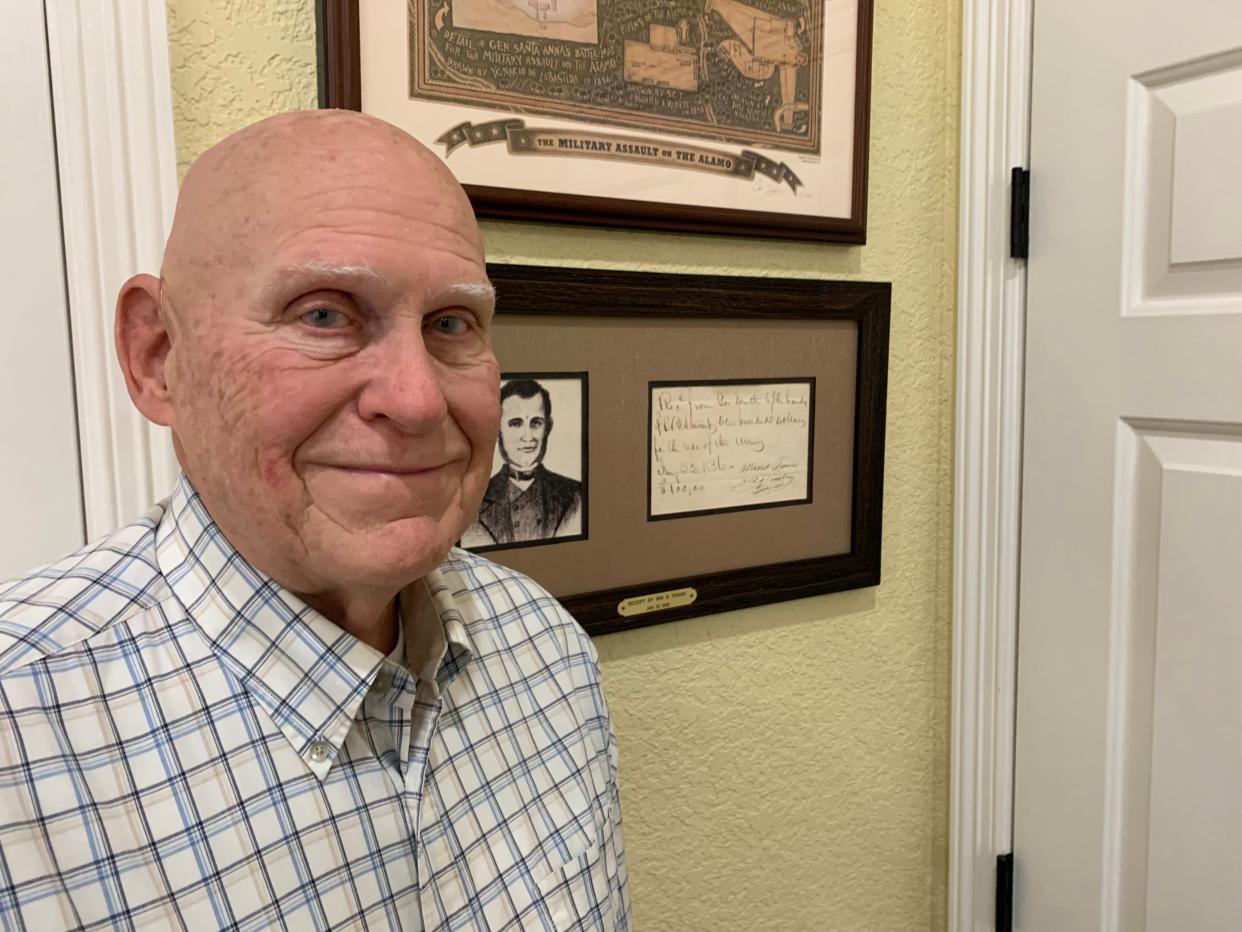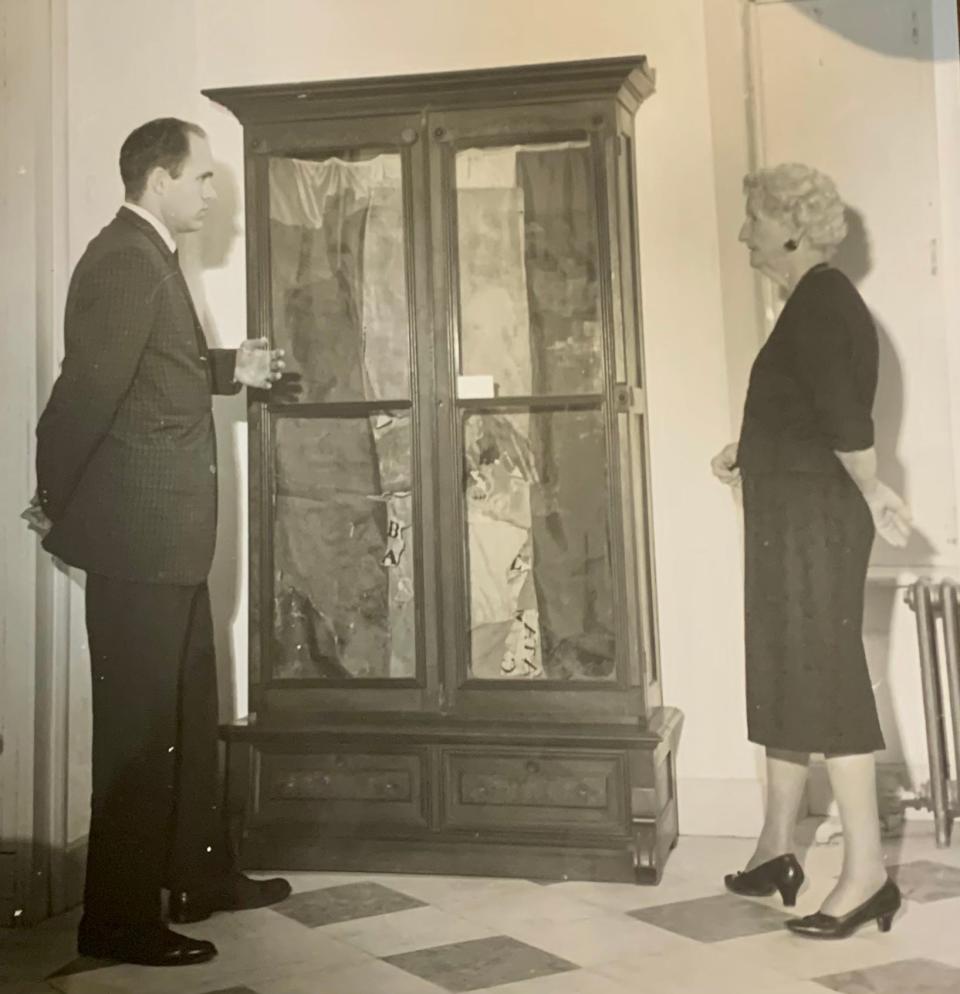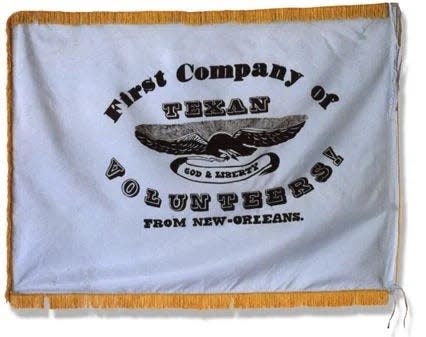Should Mexico and Texas exchange captured battle flags? A Georgetown man's 60-year quest

- Oops!Something went wrong.Please try again later.
GEORGETOWN — History buff Jerry Stephens hopes to deepen the friendship between Texas and Mexico by convincing them to exchange flags.
Not just any flags, but two battle flags captured during the Texas Revolution of 1835-1836.
Stephens has been proposing the trade for 60 years.
Much earlier in his remarkable life, Stephens, 87, saw both banners with his own eyes. At the time of his first encounters with them in the 1950s and '60s, both were fragile and inexpertly protected from the elements.
In 1959, he recognized the regimental flag of the New Orleans Greys, a group of American volunteers who joined the Texians and Tejanos in the battle fray, when it was on display at the National Historical Museum inside Chapultepec Castle in Mexico City. Stephens says it is currently kept in storage.
More: Don't look now: Austin and San Antonio are more alike than you think. Here's how.
If that were not enough, in 1967, he ran across a flag that had belonged to Gen. Santa Anna's troops in the attic of the old Texas Land Office, which was being run as a Confederate Museum, and now serves as the Capitol Visitors Center. The last time Stephens saw that banner, it was protected and on display at the San Jacinto Monument and State Historic Site in Harris County.
How about a swap?
"I want the New Orleans Greys flag placed at the Alamo Museum," Stephens says. "I want people to understand what it means to Texans and Alamo visitors to have the flag that actually flew during that fateful siege."

A man curious about pieces of history
The office in Stephens' ranch-style house looks like a busy place. Among the work tools for his most recent career phase — he's been a petroleum engineer, public administrator, information technology provider, commercial real estate agent and, most recently, fiberoptic specialist — are impressive historical artifacts.
Those include wooden chairs from the Texas Capitol that were rescued and refurbished.
More: Visit 10 sacred Spanish missions and sites in San Antonio to celebrate the holiday season
One of his prized possessions is an authenticated and framed note from Col. William B. Travis, purchased from famed antiques dealer Charles "Lucky" Attal. Written in spidery script, it appears to be a receipt for $100 dated Jan. 22, 1836 and addressed to Gov. Henry Smith, American-born governor of Mexican Texas who participated in the Texas Revolution.
When Stephens got married in 1959, he and his wife honeymooned in Mexico City, where he recognized the white linen flag with light blue letter of the New Orleans Greys on display.
"It was beautiful," he says. "But I had no camera. There were no camera phones back then. I thought: 'This should be back at the Alamo.'"
Eight years later when he was a graduate student at the University of Texas, Stephens discovered that one of Gen. Santa Anna's battle flags was stored in an upright case at the old Texas Land Office. He had been looking at chairs stored up there.
"I thought: Why in the attic?" Stephens says. "The silk was falling apart. I told my state representative and state senator about it. They responded: 'We've got a lot of stuff that needs to be fixed."
At was then that Stephens first proposed a trade of the Mexican flag for the Greys flag.
When Stephens found the Mexican flag, he persuaded the Texas Legislature to appropriate funds to send the tattered remains to West Point for proper restoration and display in a pecan case at the State Library and Archives. A legislative delegation contacted Mexican authorities regarding the trade. According to Stephens, their response was "Why would we want the flag of a five-times dictator of our nation?"
Later, after serving on the staffs of major U.S. politicians from Texas, Stephens checked in on the Santa Anna flag, but it was gone. It had been moved to the museum at the San Jacinto Monument.
"I visited the museum and asked to speak to the curator," Stephens recalls. "They had put it in a helium-filled case where the sun couldn't get to it."

Where should the flags go?
In recent times, Mexico and Texas have cooperated on the repatriation of historical objects.
Last year, for instance, more than 80 ancient artifacts swiped from a Mexican museum in 2008 were returned during a ceremony at the Museum of Big Bend. In 2021, it was 523 pre-Hispanic-era archaeological pieces sent back to Mexico; in 2023, the number of such treasures was some 280.
The return of stolen goods does not carry the emotional heft of captured battle flags.
More: In San Antonio, do visit the Pearl District, a jewel among the city's tourist sites
Recently, Stephens toured the new Ralston Family Collection Center in the Alamo complex. Seeing a diorama that suggested where the New Orleans Greys fought during the battle there reminded him of his proposed flag trade.
Say what you will about the selections from museums Phil Collins' Alamo-themed artifacts at the center — or about the lack of clear explanations about the origins of the objects — the place is amazingly well put-together.
It is not yet known if the experts, diplomats and administrators would be interested in the exchange, or who in fact could make it happen. I promised to keep asking.
"If the Mexican authorities are open to returning the New Orleans Greys flag to San Antonio," Stephens says. "That would fulfill a six-decades-long goal."
Michael Barnes writes about the people, places, culture and history of Austin and Texas. He can be reached at mbarnes@gannett.com. Sign up for the free weekly digital newsletter, Think, Texas, at statesman.com/newsletters, or at the newsletter page of your local USA Today Network paper.
This article originally appeared on Austin American-Statesman: Texas Revolution: Man wants Texas, Mexico to trade battle flags

